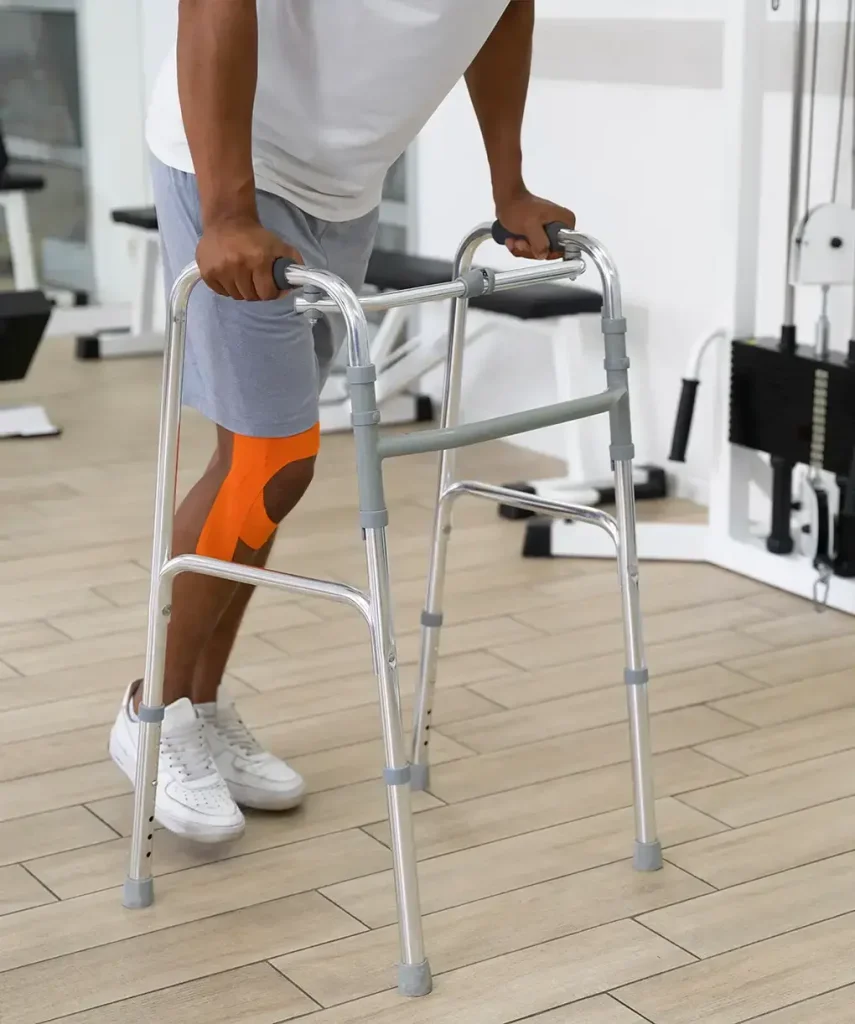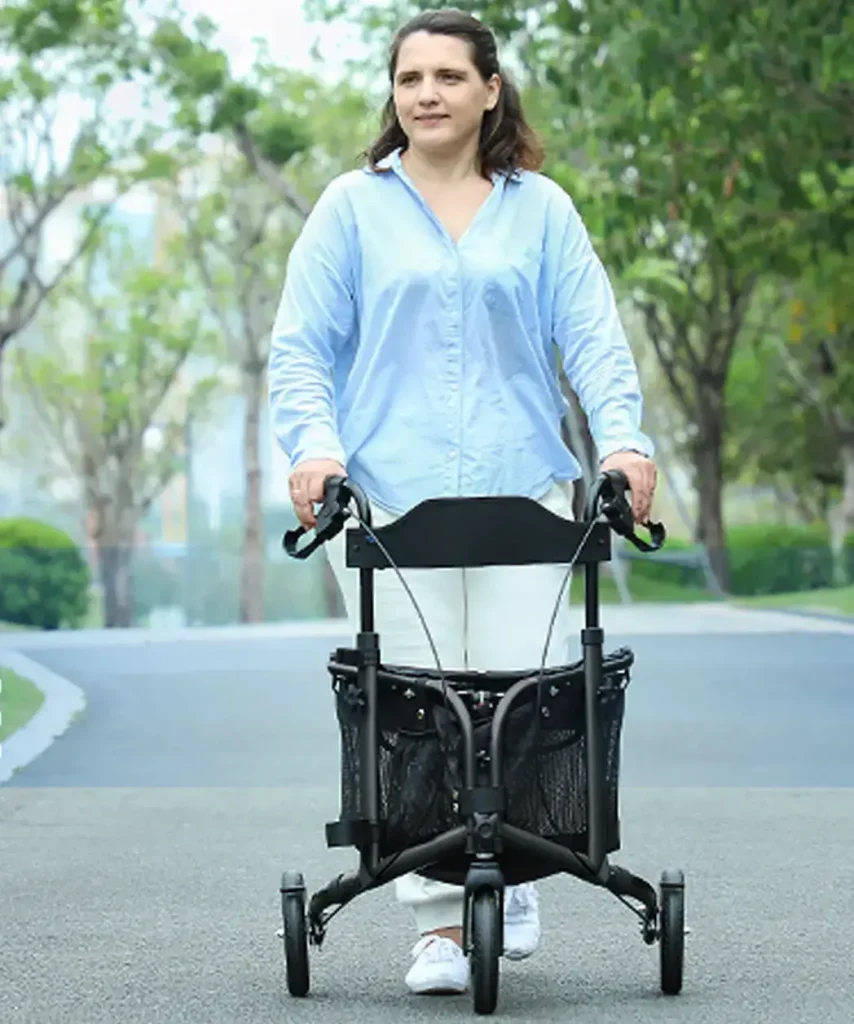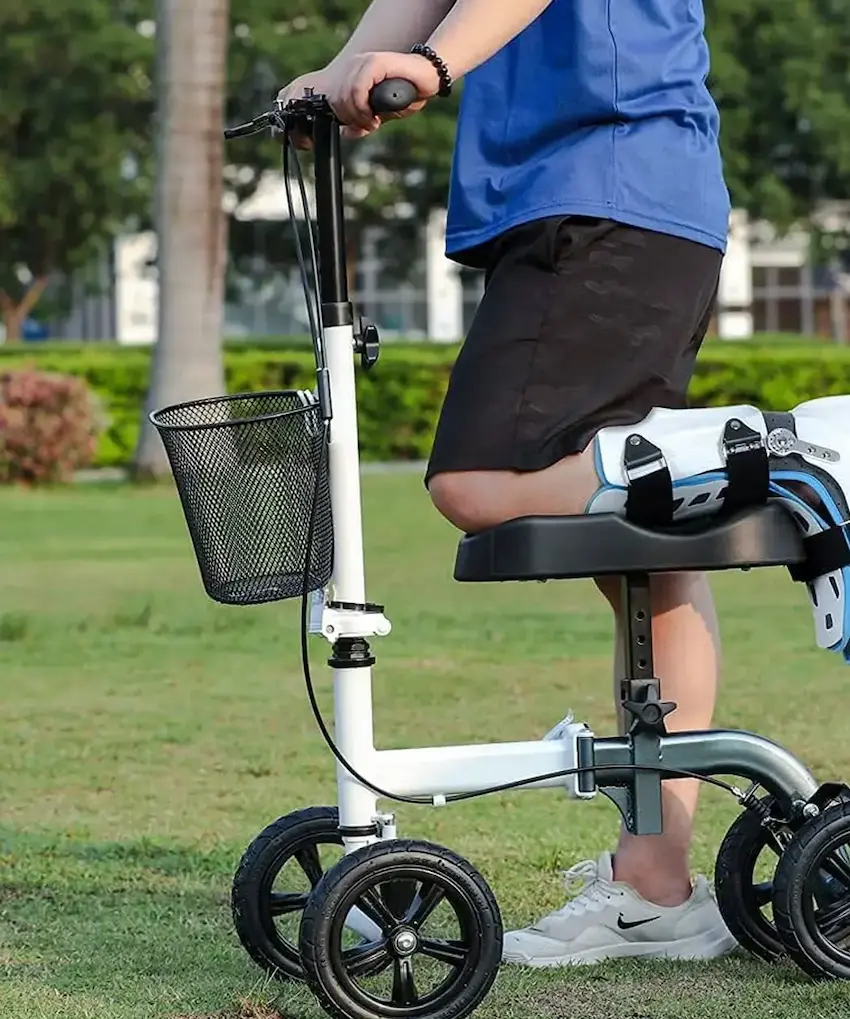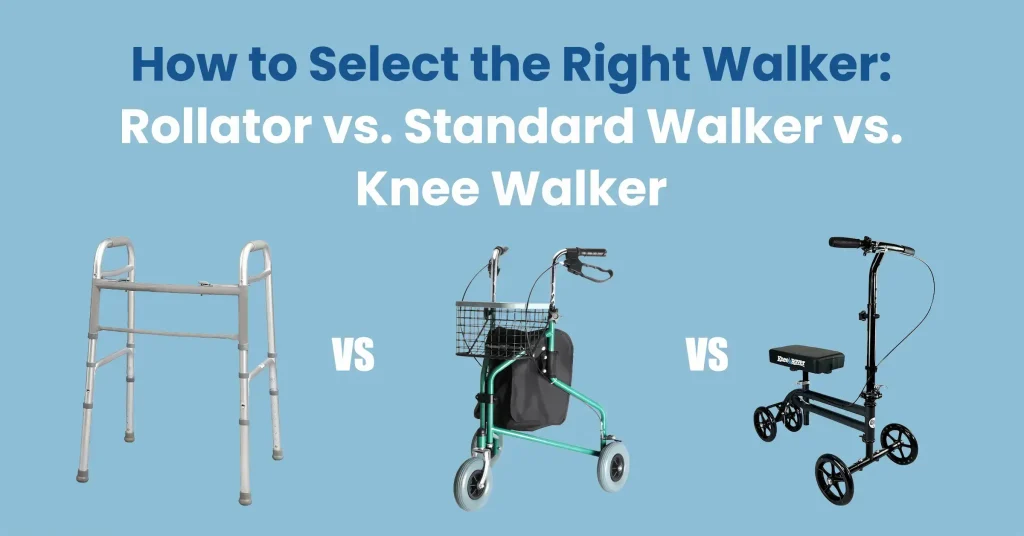Choosing a mobility aid is a significant decision. It impacts your daily independence and safety. The right walker provides support and freedom. The wrong one can cause frustration or even injury. This guide will help you navigate the options. We compare the three main types: rollator, standard walkers, and knee walkers. Our goal is to empower you with clear information. You can then select the best walker for your specific situation
Understanding Your Primary Options
First you must understand each device’s fundamental design. A standard walker is a simple frame with four rubber-tipped legs. It offers maximum stability but requires lifting with each step. A rollator walker includes wheels and hand brakes. Many models also feature a built-in seat. This design allows for smoother, continuous movement. A knee walker is a four-wheeled device with a padded platform. You rest your injured knee on this platform while pushing with your good leg. It is specifically for lower leg injuries like a broken ankle.
The Standard Walker: Maximum Stability for Frail Users
The standard walker is the most basic design. It is also the most stable. This makes it an excellent choice for very frail individuals. It suits those with significant balance issues. It is ideal for people recovering from major surgery. This walker provides a sturdy anchor with each step.
You must lift the walker slightly to move forward. This lifting motion requires some upper body strength. It also demands good coordination. This device is best for short distances indoors. Its simple design means it is often the most affordable option. However the constant lifting can be tiring. It is not ideal for those who need to walk longer distances.

The Rollator Walker: Freedom and Functionality on the Go
A rollator walker represents a significant upgrade in functionality. Its wheels allow for a natural walking rhythm. You simply push it forward without lifting. This makes it far less taxing to use. It is best for individuals who need support and daily outdoor mobility. The rollator is a fantastic medical equipment for maintaining an active lifestyle.
Many rollators come with a built-in seat. This is a crucial feature for those with limited stamina. The seat allows you to rest whenever needed. You can take a break while shopping or waiting in line. Most models also include a storage basket. This basket is invaluable for carrying personal items or groceries. Hand brakes are essential for control and safety. They help you manage speed especially on gentle slopes.

The Knee Walker: A Niche Solution for Leg Injuries
The knee walker serves a very specific purpose. It is designed for people with a single leg injury. Common users include those with a broken foot or a sprained ankle. It is an alternative to traditional crutches. Many people find it much more comfortable and stable than crutches.
You propel the knee walker by pushing with your uninjured leg. Your injured leg rests comfortably on the padded platform. This keeps the injured limb completely non-weight-bearing as required. It offers excellent maneuverability and speed. It is typically used for a temporary period during recovery. Its use is generally not recommended for general balance or strength issues.

Key Decision Factors: A Side-by-Side Comparison
Your choice depends on several personal factors. Consider your specific medical condition first. Is it a general mobility issue or a specific injury? Next think about your required stability level. Do you need the absolute strongest support available? Then assess your stamina and strength. How far do you typically need to walk each day? Finally consider your living environment. Is your home spacious or cramped with narrow doorways?
The standard walker offers supreme stability. But it requires more physical effort to use. The rollator walker provides less stability than a standard model. Yet it offers unparalleled ease of movement and a convenient seat. The knee walker is highly maneuverable and comfortable for its specific purpose. However it is completely unsuitable for any upper body or balance problems.
Prioritizing Safety
Safety must be consider first because if you are safe, you can live a healthy life. The right walker must be adjustable. When you stand inside the walker your hands should set comfortably on the grips. Your elbows should be in slightly bend posture. This ensures proper control and risk-free movement. Always consult a healthcare professional before making a decision. A doctor or physical therapist can provide most-necessary advice. They will recommend the type best suited to your condition.
Get use-to with your new walker in a safe environment. An empty room or hallway is ideal. Learn how to use the brakes on a rollator effectively. Make sure you can sit and stand from the seat safely. For standard walkers practice the lifting and stepping motion. Proper technique prevents falls and strain.
Conclusion: Empowering Your Mobility Journey
Selecting a walker is about improving quality of life. There is no individual best walker for everyone. The ideal choice is the one that meets your unique needs. The standard walker offers foundational support and maintain your strength. The versatile rollator walker promotes activity and independence for many. The specialized knee walker is comfortable during a specific recovery.
Think carefully about your daily routines. Consider your physical capabilities. Make an informed decision that prioritises your safety and freedom. The correct mobility aid can open up new possibilities. It helps you engage with the world on your own terms with confidence and security.
FAQ’s
Q: What is a rollator?
A: A Rollator is a walker with wheels. It often has a seat and storage basket.
Q: Who should use a standard walker?
A: Use a standard walker for maximum stability. It is best for very poor balance.
Q: Is knee walker better than crutches?
A: Many find a knee walker more stable and comfortable. It is ideal for lower leg injuries.
Q: What is the main con of a standard walker?
A: You must lift it to move. This requires some upper body strength.
Q: Does Medicare cover rollators?
A: Sometimes it covers rollators with a doctor’s prescription. Check your plan details.
Q: How do I choose the best walker?
A: Think carefully about your strength, and living environment. Consult a healthcare professional.
Q: What is the safest type of walker?
A: A standard walker offers greater stability. It is the safest for fall prevention.

